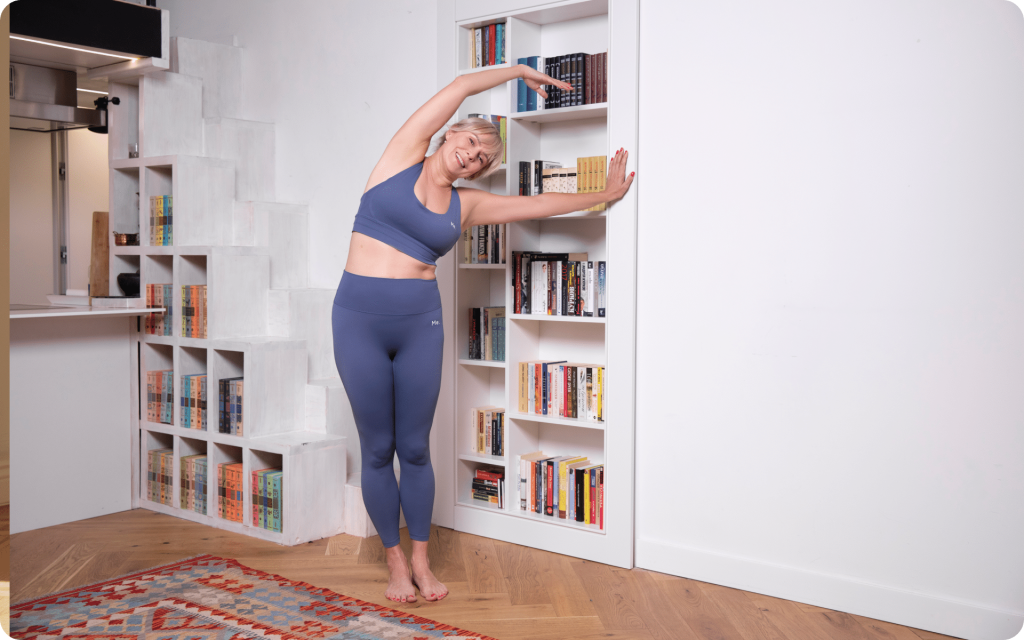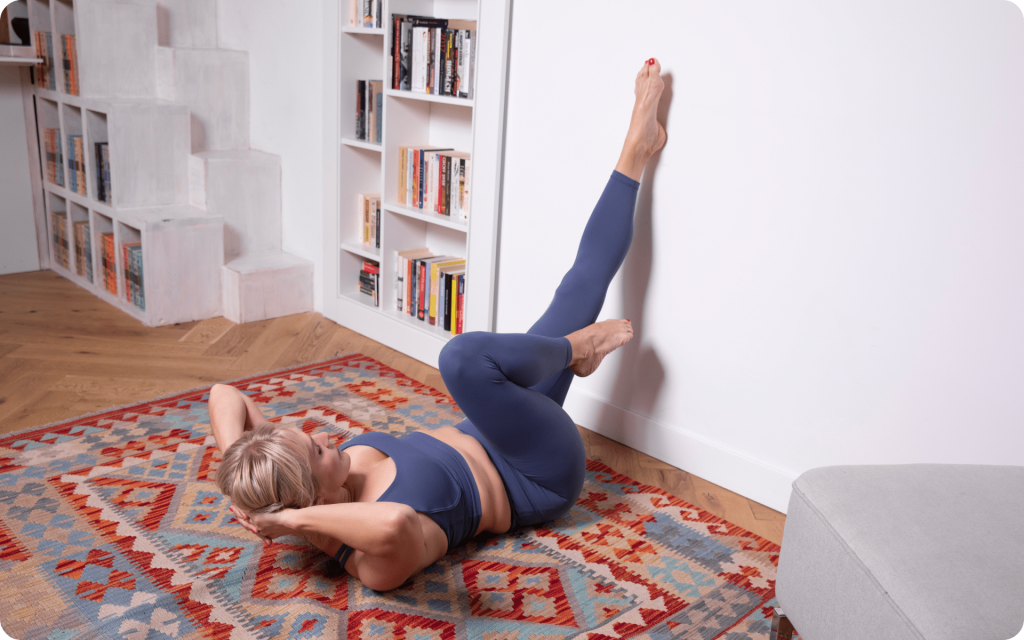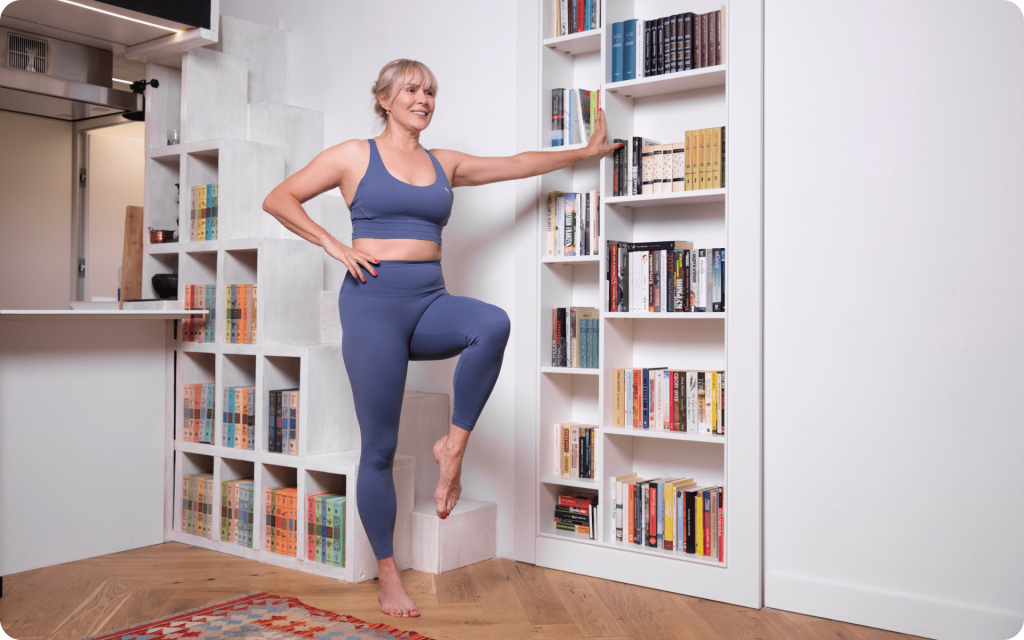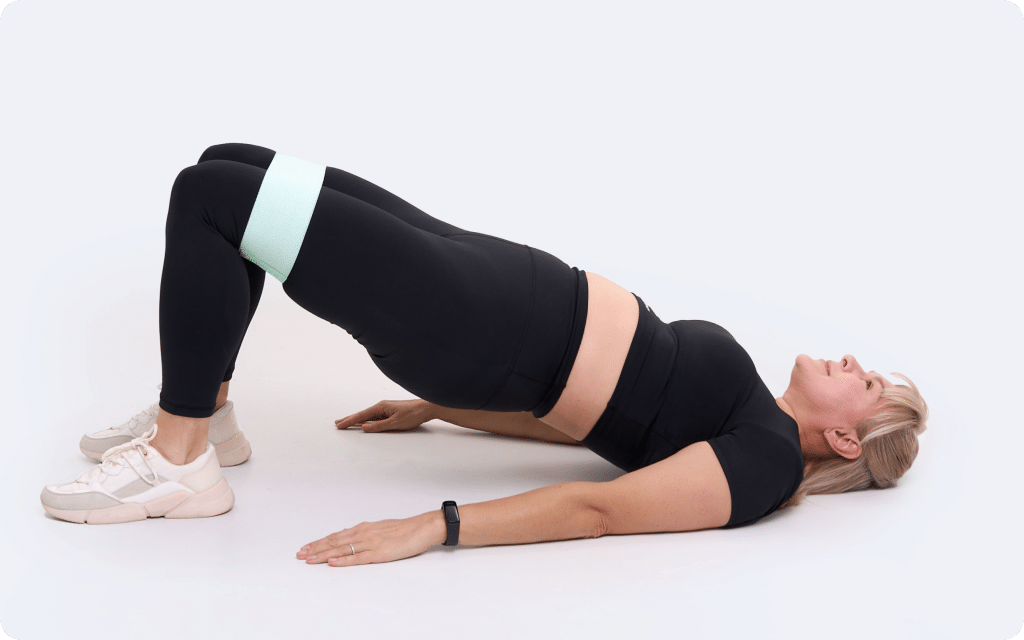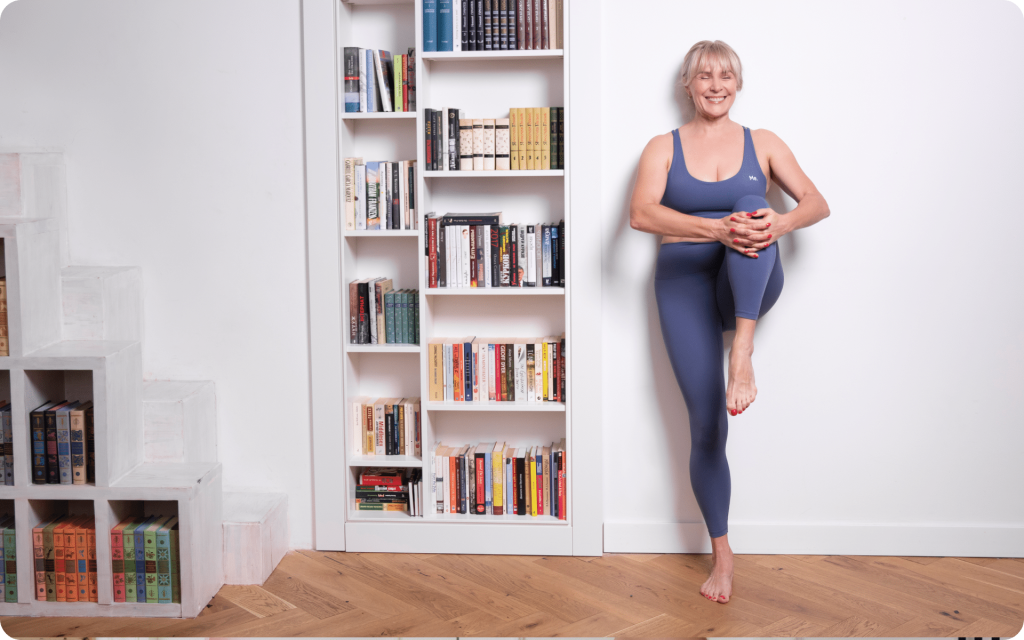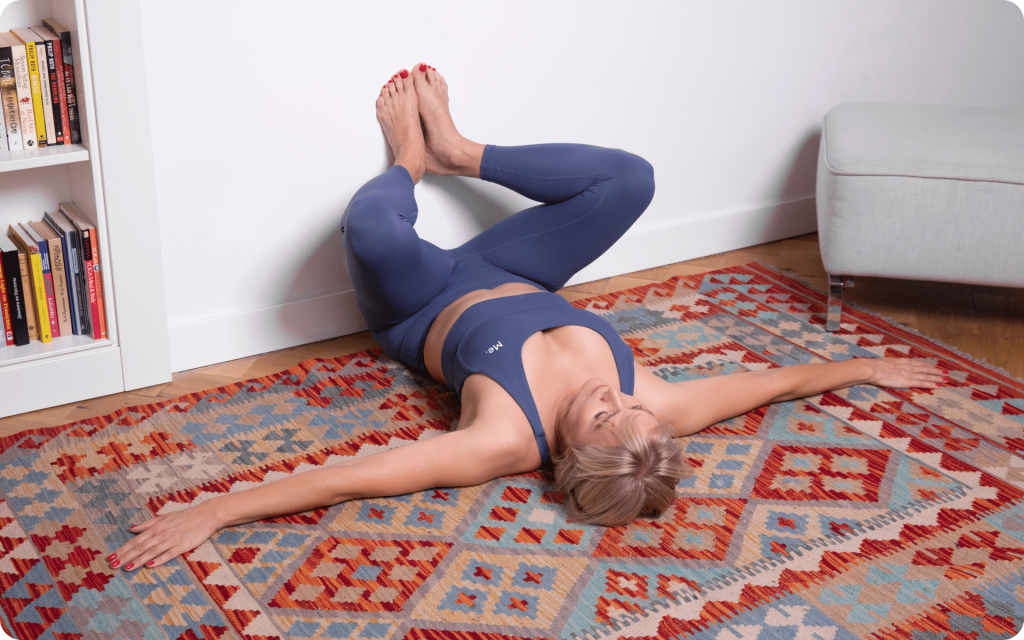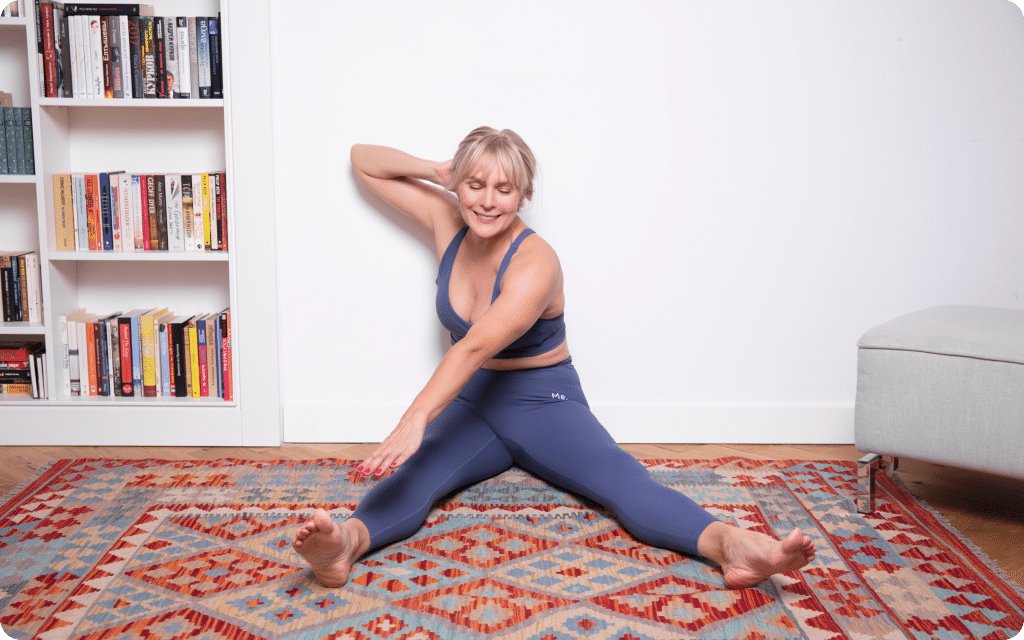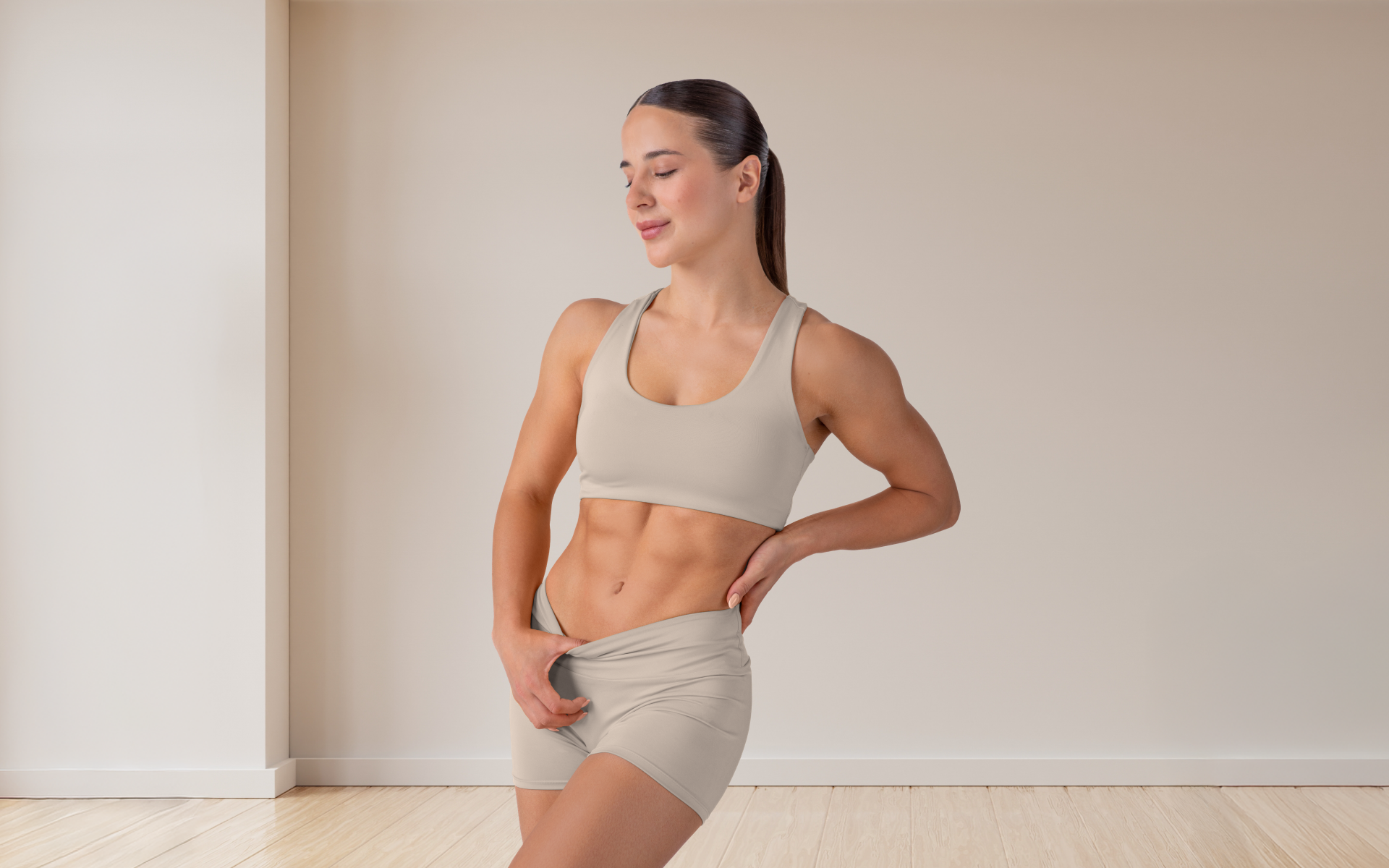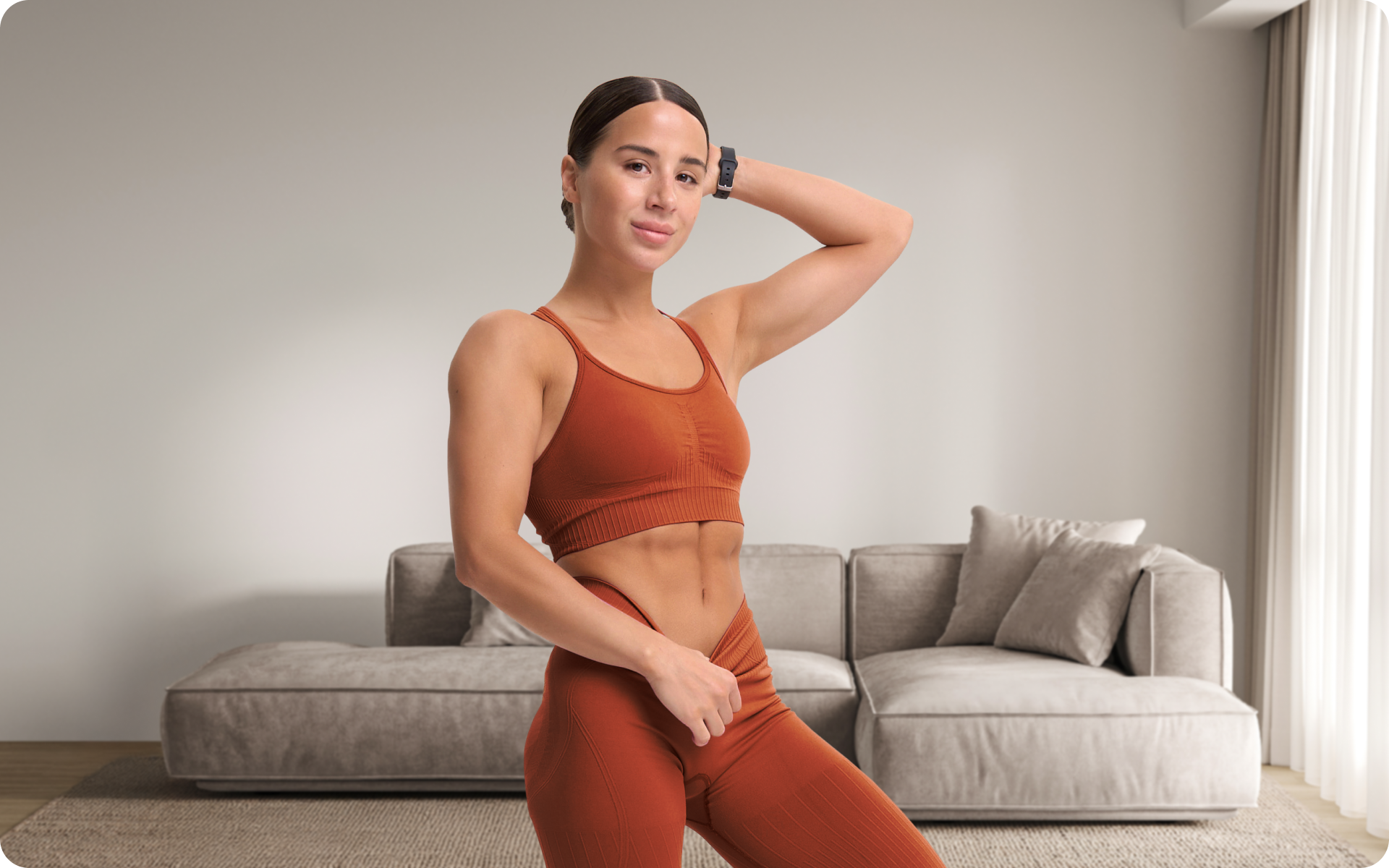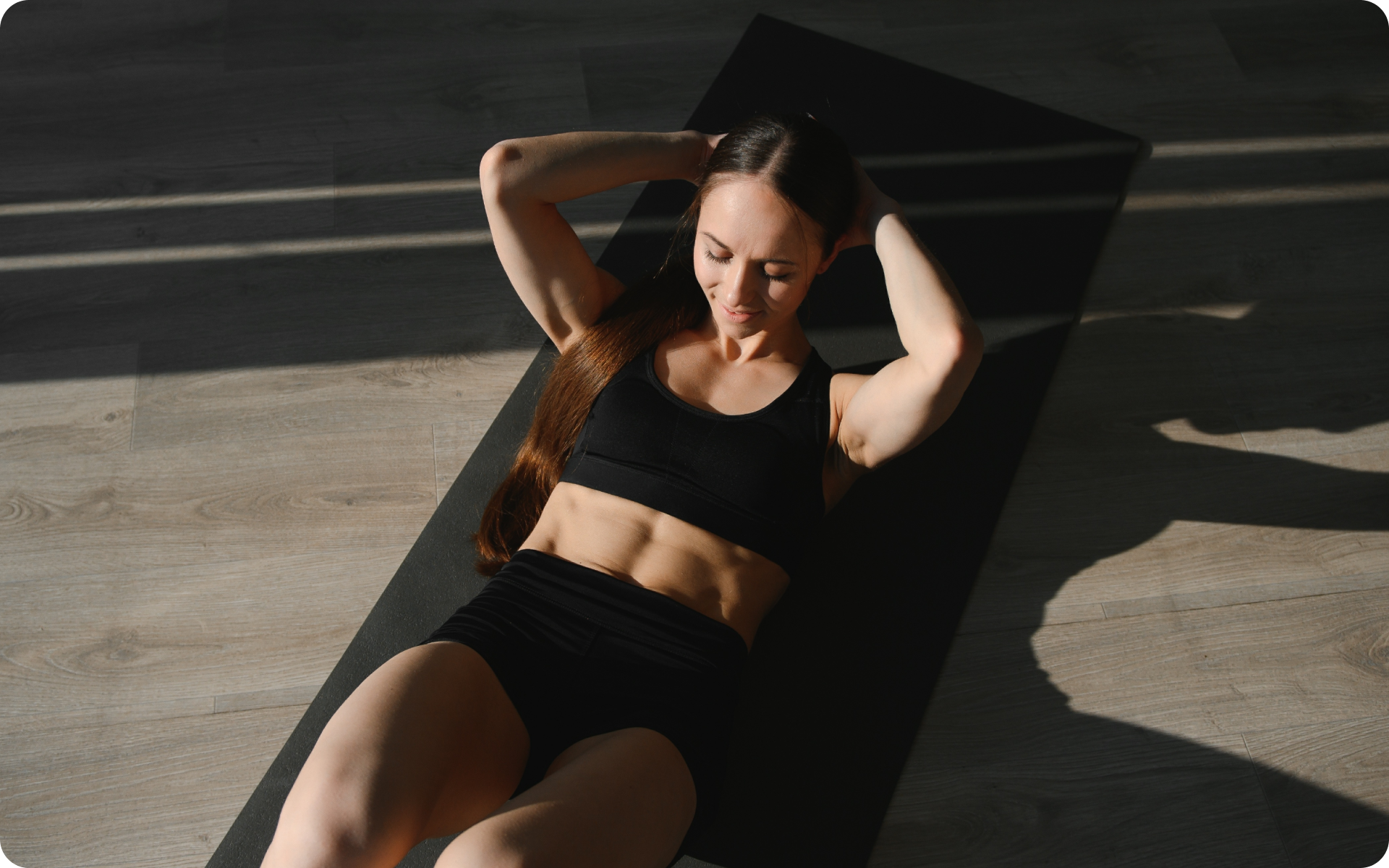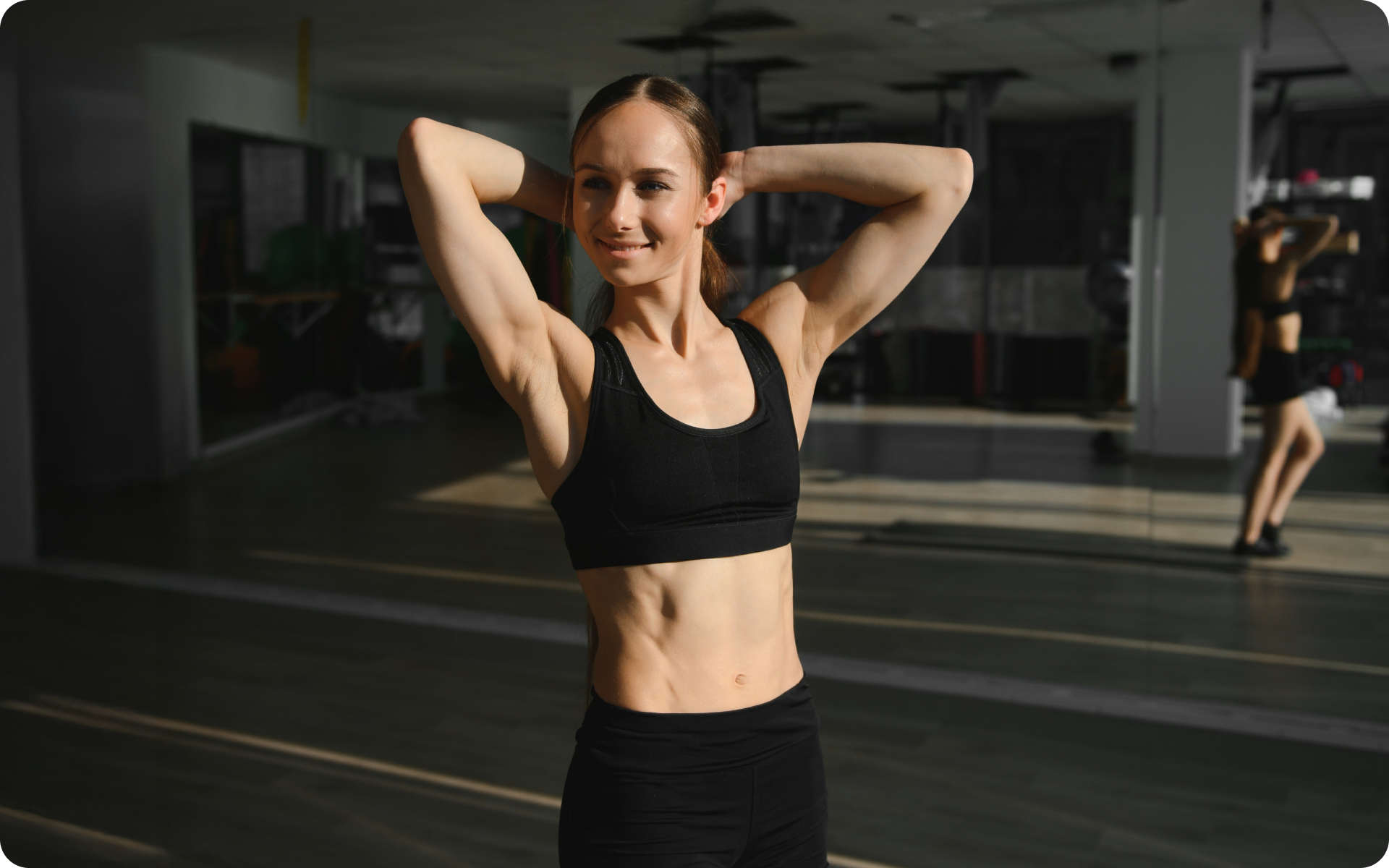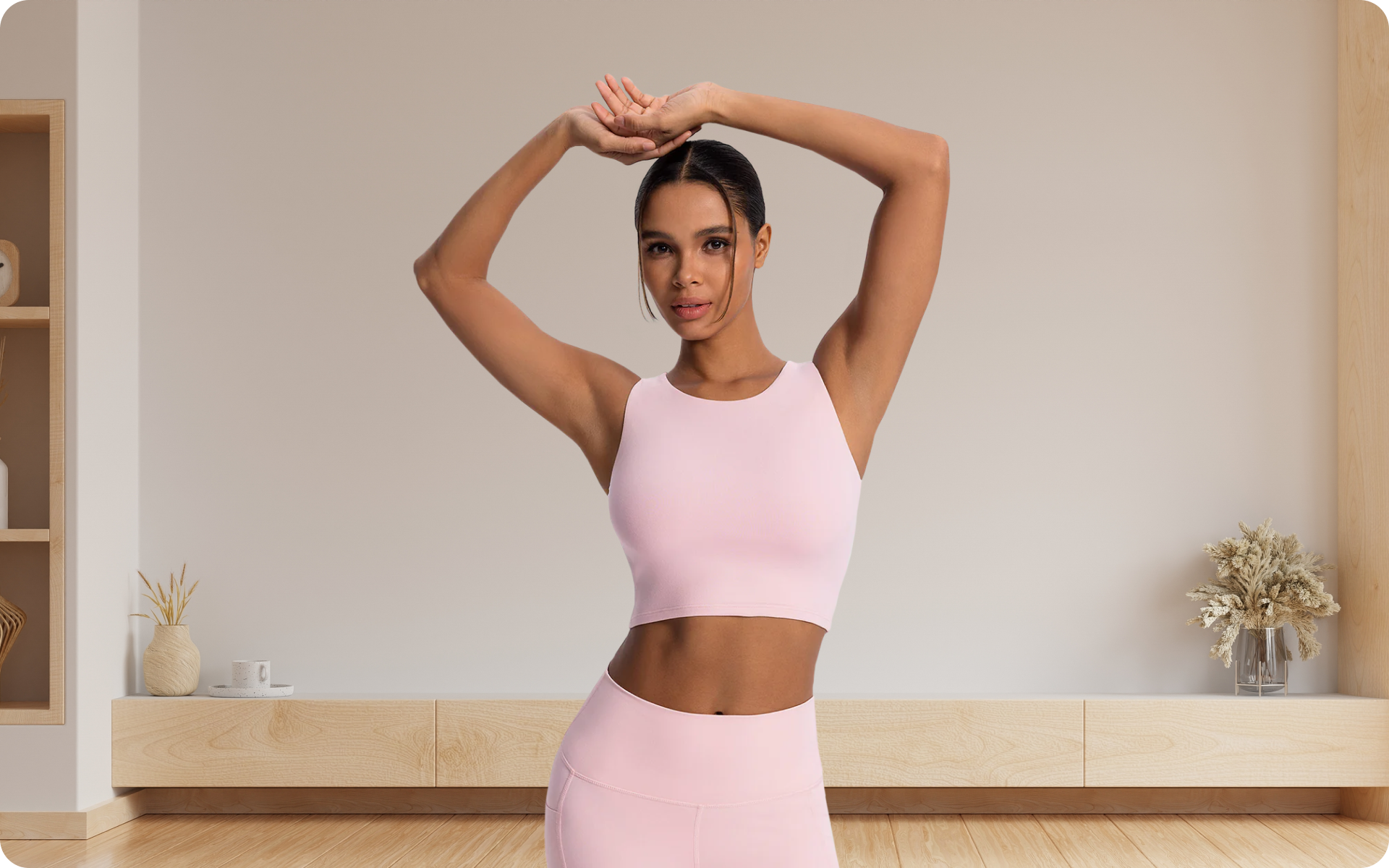As you age, your body goes through natural changes. Muscle mass starts to decline, often beginning as early as in your 30s (1). This includes the core muscles, which play a vital role in supporting your spine, maintaining balance, and enabling smooth movement (2).
By the time you hit your senior years, a weak core can lead to poor posture and a higher risk of falls. These aren’t just inconveniences but real challenges that affect mobility and independence (3).
The good news? You don’t need intense workouts or gym equipment to strengthen your core. Gentle, consistent exercises can make a significant difference.
The right movements can build strength, improve balance, and make daily activities safer and easier. This is particularly important in your later years, where maintaining function and preventing injury take priority over high-intensity training.
In this article, we share 10 simple yet effective abdominal exercises you can easily do at home.
Why Is Core Strength Important for Seniors?
Gentle, targeted exercises can yield meaningful benefits, helping seniors stay active, confident, and independent for as long as possible.
Building core strength can help seniors achieve:
- Improved Balance and Stability
Core strength is essential for maintaining balance and stability. The core muscles, which include the abdominals, back, and hips, act as stabilizers during everyday movements. Weak core muscles reduce your ability to stay steady on uneven surfaces or when standing on one foot. This can increase the risk of losing your balance (4).
Studies on older adults have shown that core instability training (CIT), which challenges the trunk muscles and balance systems, improves dynamic balance (5, 6). Better balance means seniors can walk with more confidence, climb stairs, and recover quickly if they stumble. Our previous post goes into great detail about the balance exercises for seniors.
- Reduced Risk of Falls
Falls are one of the leading causes of injury in seniors (7). A weak core contributes to instability and poor reaction times, both of which increase fall risk. Research has indicated that strengthening the core improves the body’s ability to control sudden shifts in movement (5).
For example, exercises that build trunk strength and train postural control have been found to reduce the likelihood of falls. Working on core muscles helps seniors to stay upright and regain stability if they trip (5), an essential protective measure as aging progresses.
- Enhanced Mobility and Functional Independence
Everyday activities such as standing up from a chair, bending down to tie shoes, or turning to grab something require core engagement. A strong core supports the spine and pelvis, which allows for smoother, more controlled movement patterns (5, 6).
Research on CIT has also shown improvements in functional mobility tests, such as the timed up and go test (a measure of standing, walking, and turning) (5). These improvements highlight how strengthening the core can make daily tasks easier and help seniors remain independent.
- Improved Resilience with Back Injuries
By strengthening the stabilizing muscles around the spine, seniors can improve their tolerance to being in many different positions and performing a variety of movements, which reduces strain on the lower back and results in fewer injuries.
- Increased Confidence and Psychological Well-Being
Core strength doesn’t only impact physical health, it can also boost confidence. A stronger core improves movement and reduces the fear of falling, which is a significant concern for many older adults (5).
Research has shown that seniors who engage in structured core training programs report improved psychological well-being (9). Knowing that their body is more stable and capable helps them feel safer doing everyday activities. This mental boost can greatly improve overall quality of life.
BetterMe: Health Coaching app helps you achieve your body goals with ease and efficiency by helping to choose proper meal plans and effective workouts. Start using our app and you will see good results in a short time.
- Improved Coordination and Movement Efficiency
The core acts as the body’s center of power, connecting and transmitting energy between the upper and lower body. If the core is weak, this connection is disrupted, which can lead to inefficient movements and an increased risk of injury and falls as you age.
Training the core helps fine-tune coordination, making movement patterns smoother and more efficient (5). This can be particularly helpful for seniors in reducing joint strain during activities such as walking or lifting groceries.
- Support for Other Forms of Exercise
A strong core provides a solid foundation for most forms of physical activity. Whether it’s weight training, yoga, or walking, core strength allows seniors to perform these exercises more effectively and with a reduced risk of injury (10).
For example, when the core muscles are strong, they can work with other muscles around the hips and knees. This helps preserve overall joint health and resilience over time, which is particularly important as arthritis becomes more common with age.
Read more: Pilates Over 50: The Benefits For Aging Adults
How Do I Strengthen My Core After 70?
The human body remains adaptable well into older age. With the right approach, it’s never too late to improve core strength. To do so successfully, keep this in mind:
Understanding Muscle Adaptability
Muscles retain the ability to respond to training at any age. When you engage in consistent physical activity, your muscles adapt by becoming stronger and more coordinated. This is true even if you’re starting from a sedentary lifestyle. While the process may be slower in older adults, research shows that muscles can still gain strength and function well into your later years (11).
For the core, this means improving the strength of key stabilizing muscles in your abdomen, back, hips, and pelvis. These muscles support your spine and assist in almost every movement you make (2). The body’s ability to strengthen these muscles doesn’t diminish simply because you’ve reached a certain age. It just requires a safe, well-planned approach.
Start With Gradual Progression
Your starting point matters. If you’ve been inactive for years, rushing into intense workouts can do more harm than good.
Instead, focus on gradual progression. Start with movements that are low-impact and gentle on your joints. Exercises should match your current fitness level, allowing you to build core strength slowly and safely.
The key is consistency. Even small improvements, such as better posture or increased stability, contribute to significant long-term benefits. Over time, these small steps can prepare your body for slightly more challenging movements when you’re ready.
Low-Impact and Safe Movements
Safety is a priority, particularly for seniors. Core strengthening doesn’t require heavy weights or extreme positions.
Instead, low-impact exercises you can easily perform at home are highly effective. These movements typically involve controlled motions that engage your core without putting any strain on your back or other joints.
The focus isn’t on speed or intensity but on maintaining good form. For seniors, slow and intentional movements are often better for building stability and strength.
Building Core Strength Is More Than Crunches
Many people think of crunches when they hear “core exercises”, but there’s much more to building core strength.
The core includes deeper muscles like the transverse abdominis (which stabilizes the spine), the pelvic floor, and the multifidus (small stabilizing muscles along the spine) (2). Strengthening these muscles improves your posture, balance, and ability to perform everyday activities safely.
These muscles don’t need to be worked with complex or aggressive movements. Simple tasks such as gently activating your abdominal muscles while sitting, or small balance adjustments during daily activities, can start to strengthen your core. For more details about core exercises for seniors, take a look at our prior publication.
Seek Professional Guidance
Engaging with a physical therapist, personal trainer, or medical professional who understands the needs of older adults can be invaluable.
A professional can guide you through proper movement patterns and ensure you exercise safely. They can also identify your specific needs and tailor recommendations to help you progress without overexerting yourself.
Supervised training also helps build your confidence. Knowing that you’re practicing the right techniques in a safe environment removes some of the fear that is associated with starting a new routine.
Be Patient With Results
Unlike younger adults, older muscles may take more time to respond to training. This can feel frustrating, but it’s a normal part of the adaptation process.
Consistency and patience are your greatest allies. Over time, you’ll feel improvements in how you stand, move, and perform tasks such as bending, reaching, or standing up from a chair.
The goal isn’t to pursue rapid results or improvements in appearance. Instead, it’s about functional strength. This type of strength allows you to maintain independence in daily life and feel more stable and confident as you move through the world.
What Are Some Easy Abdominal Exercises for Seniors?
Here are 10 gentle abdominal exercises that seniors can do at home. Each one of them can be adjusted based on individual fitness levels. It’s important to start slow, focus on proper form, and never push to the point of discomfort. If you have any medical conditions or concerns, consult a doctor or physical therapist before you start.
If you are unable to get on the floor, most of these exercises can be done on your bed or a couch. To learn more about chair yoga abdominal exercises, check out our in-depth article on the topic.
1. Quadrupeds (Bird-Dog)
This exercise stabilizes the spine and activates the transverse abdominis (a deep abdominal muscle), erector spinae (the lower back), and gluteal muscles.
Steps:
- Start on all fours with your hands directly under your shoulders and your knees under your hips.
- Engage your core by gently pulling your belly button toward your spine.
- Slowly extend your right arm straight in front of you while stretching your left leg behind you.
- Keep your back flat and your hips stable. Avoid arching or twisting.
- Hold for 2-3 seconds, then return to the starting position.
- Repeat on the other side, extending your left arm and right leg.
- Perform 5-10 repetitions per side.
Note: if this position hurts your wrists, you can try it with your hands in a fist.
2. Floor Bridge
This movement strengthens the gluteus maximus (your largest hip muscle) and helps engage the lower core for better pelvic stability.
Steps:
- Lie on your back with your knees bent and your feet flat on the floor, approximately hip-width apart.
- Place your hands by your sides with your palms facing down.
- Press your feet into the floor and slowly lift your hips, creating a straight line from your shoulders to your knees.
- Engage your glutes and hold the position for 3-5 seconds.
- Lower your hips back down slowly and with control.
- Repeat for 8-12 repetitions.
3. Half-Kneeling Chops
This exercise engages the obliques (muscles along the sides of your core) and improves stability in your lower body.
Steps:
- Kneel on your right knee with your left foot flat on the floor (in a half-kneeling position). Maintain an upright posture.
- Hold a small weight, resistance band, or an object such as a water bottle.
- Start with your hands at shoulder height on one side of your body.
- Engage your core and “chop” diagonally across your body, moving your hands toward the opposite hip.
- Return to the starting position with control.
- Complete 8-10 repetitions, then switch sides.
4. Pallof Press
This exercise targets the deep core muscles responsible for resisting rotation, helping to build stability and reduce strain on the spine.
Steps:
- Anchor a resistance band to a sturdy object at chest height.
- Hold the other end of the band with both hands and step back to create tension.
- Stand with your feet hip-width apart and face sideways to the anchor point (the band will pull you toward it).
- Hold the band at your chest, then slowly extend your arms straight out in front of you.
- Resist the band’s pull to maintain a stable posture.
- Bring your hands back to your chest with control.
- Perform 8-12 repetitions per side.
5. Plank
The plank strengthens the entire core, including the rectus abdominis (the “six-pack” muscles), transverse abdominis, and obliques, while also engaging the shoulders and back.
Steps:
- Lie face down on the floor and position yourself on your forearms and toes.
- Keep your elbows directly under your shoulders.
- Engage your abdominal muscles and create a straight line from your shoulders to your ankles.
- Hold the position for 10-20 seconds, gradually increasing the duration as you build strength.
- Lower yourself down carefully and rest before repeating.
Note: you can do this on your knees if you find this version too challenging.
6. Stability Ball Plank
This variation of the plank increases the challenge to your core muscles by adding an element of instability.
Steps:
- Place your forearms on a stability ball with your body extended behind you.
- Engage your core and hold a straight line from your shoulders to your toes, just like a regular plank.
- Maintain stability as you hold the position for 10-15 seconds.
- Lower yourself gently and rest before the next repetition.
7. Single-Leg Stand with Arm Movements
This simple balance exercise challenges the deep core muscles and improves coordination.
Steps:
- Stand next to a sturdy chair or use a wall for support, if needed.
- Shift your weight onto your left foot and lift your right foot slightly off the ground.
- Extend your arms and move them slowly in different directions (forward, sideways, or upward).
- Keep your core engaged and maintain your balance.
- Hold for 10-15 seconds before switching to the opposite leg.
- Perform 5 repetitions per side.
Note: you can hold onto a sturdy object as needed if you find this too challenging.
8. Cable or Resistance Band Rotations
Rotational movements engage the obliques and help improve spinal mobility and trunk strength.
Steps:
- Attach a resistance band to a sturdy object at chest height.
- Stand sideways to the anchor and hold the band with both hands.
- With knees slightly bent, rotate your torso away from the anchor point while keeping your hips stable.
- Return to the starting position with control.
- Complete 10-12 repetitions before switching sides.
9. Functional Reach Exercise
This movement targets postural stability by activating the core muscles during balance shifts.
Steps:
- Stand with your feet shoulder-width apart near a sturdy surface for support.
- Extend one arm and reach forward as far as you comfortably can without losing your balance.
- Return to an upright position.
- Repeat the movement to the side and diagonally, using the same arm, then switch arms.
- Perform 5-8 repetitions for each direction.
10. Medicine Ball Twists
Twisting motions activate the obliques and promote trunk mobility while improving rotational strength.
Steps:
- Sit on the floor with your knees bent and your feet flat.
- Hold a light medicine ball or any weighted object at chest height.
- Lean back slightly, keeping your back straight and your core engaged.
- Slowly twist your torso to the right, touching the ball to the floor beside you.
- Return to the center, then twist to the left.
- Complete 8-10 repetitions per side.
Read more: Wall Pilates for People over 50: 5 Gentle Exercises to Improve Balance and Strength
What Exercise Burns the Most Belly Fat for Seniors?
When it comes to reducing belly fat, there’s an important fact you must understand first. Spot reduction, or the idea of burning fat from a specific area like the belly, isn’t possible. Fat loss occurs throughout the body as a result of overall calorie expenditure (12). The best approach to reducing belly fat is a combination of regular physical activity, healthy nutrition, and sustainable lifestyle habits.
That being said, seniors have specific needs to consider. High-intensity workouts may not be practical or safe for everyone in this age group. Instead, low-impact, sustainable exercises are highly effective for overall fat loss while also being easier on the joints. One standout option is walking.
It’s low-impact, requires no special equipment, and can be adjusted to suit different fitness levels. While walking alone won’t specifically target belly fat, it helps create the “caloric deficit” that’s needed for fat loss. This means you burn more calories than you consume, which prompts your body to draw on stored fat for energy (13).
Walking also boosts your cardiovascular health, strengthens the lower-body muscles, and improves mobility and balance. Importantly, it’s an activity that can be enjoyed daily, which makes it easier to remain consistent (14).
While walking is highly effective, seniors may also grow stronger and healthier by incorporating other low-impact activities. These can complement your walking routine and provide overall health benefits:
- Swimming or Water Aerobics: Gentle on the joints but still a great calorie burner. Water provides natural resistance to engage your muscles (15).
- Cycling: Stationary or outdoor cycling can provide a low-impact cardiovascular workout(16).
- Tai Chi or Yoga: These focus on flexibility, balance, and mindfulness while improving muscle tone and overall calorie expenditure.
- Strength Training: Using light weights or resistance bands a few times per week builds muscle, which increases your resting metabolic rate (how many calories you burn at rest) (17).
Should Seniors Use Weights for Ab Training?
Yes, seniors can use weights for ab training, but it should be approached with caution and tailored to individual fitness levels. Adding light weights, such as dumbbells or resistance bands, to core exercises can help increase muscle strength and challenge stability (18). This may offer benefits such as enhanced functional strength and improved balance, which are essential in later years.
However, safety is key. Proper form is essential to avoid strain on the back or other joints. It’s best to start with bodyweight exercises and progress to weighted movements gradually under the guidance of a professional. Modifications may also be necessary for seniors with health conditions such as osteoporosis or limited mobility.
BetterMe will shake off your mental funk, rid you of your energy-zapping habits, and help you sculpt the body of your dreams. Intrigued? Hurry up and change your life for the better!
What to Eat to Lose Belly Fat as a Senior
While no specific food directly targets belly fat, a balanced diet supports overall fat loss and health. Seniors will benefit from meals that are nutrient-dense and easy to digest (19).
Focus on lean proteins such as chicken, fish, or beans to maintain muscle mass and help with satiety. Incorporate fiber-rich foods, such as vegetables, fruits, and whole grains, to support digestion and control appetite. Healthy fats from sources such as nuts, seeds, and olive oil improve heart health and reduce inflammation.
Portion control is key. Eating smaller, balanced meals throughout the day can prevent overeating and stabilize blood sugar levels (20).
Limit added sugars, processed foods, and refined carbs, which contribute to weight gain and belly fat. Remaining hydrated and minimizing alcohol consumption also help your body function more efficiently.
Pairing good nutrition with regular physical activity offers the best results. Sustainable, gradual diet and lifestyle changes are more effective than restrictive or fad diets at any age.
Crunches can be safe for seniors, but they are not always the best choice. This exercise primarily targets the rectus abdominis (the “six-pack” muscles), which can be helpful. However, there are many other core muscles that are important to train as well. An alternative would be gentle core exercises such as seated abdominal contractions or modified planks, which involve a greater variety of muscle groups. For a weak core, the best exercises are those that emphasize stability and gradual strengthening without overloading the muscles. The bird-dog exercise is an excellent choice. By extending one arm and the opposite leg while on all fours, this move engages the entire core gently and improves balance and coordination. It’s low-impact, easy to perform, and can be adapted to different fitness levels. Planks can be made more accessible for seniors by reducing the weight load on the body. Start with the following modifications: These adjustments help maintain the core engagement of traditional planks while ensuring safety and comfort. Gentle core activation, such as diaphragmatic breathing or seated twists, can also encourage abdominal circulation and mobility, potentially assisting with bloating or sluggish digestion. However, ab workouts are not a direct solution to digestive issues and should be combined with a balanced diet, hydration, and regular movement for optimal gut health.Frequently Asked Questions
Are crunches safe for seniors?
What is the best ab exercise for a weak core?
How can you modify planks for seniors?
Can ab workouts help with digestion?
The Bottom Line
Strengthening your core in your later years doesn’t just help with physical tasks, it also contributes to your overall well-being. Improved physical function often leads to better mental health, reduced fear of falling, and a greater sense of independence. Every small gain in strength can significantly impact your quality of life.
Your age shouldn’t be a barrier to better health. By approaching these abdominal exercises for seniors with care, patience, and consistency, you can enjoy a stronger, more resilient body at any stage of life.
DISCLAIMER:
This article is intended for general informational purposes only and does not serve to address individual circumstances. It is not a substitute for professional advice or help and should not be relied on for making any kind of decision-making. Any action taken as a direct or indirect result of the information in this article is entirely at your own risk and is your sole responsibility.
BetterMe, its content staff, and its medical advisors accept no responsibility for inaccuracies, errors, misstatements, inconsistencies, or omissions and specifically disclaim any liability, loss or risk, personal, professional or otherwise, which may be incurred as a consequence, directly or indirectly, of the use and/or application of any content.
You should always seek the advice of your physician or other qualified health provider with any questions you may have regarding a medical condition or your specific situation. Never disregard professional medical advice or delay seeking it because of BetterMe content. If you suspect or think you may have a medical emergency, call your doctor.
SOURCES:
- Muscle tissue changes with aging (2010, pmc.ncbi.nlm.nih.gov)
- Abdominal Muscles (n.d., physio-pedia.com)
- Age-Related Dysfunction in Balance: A Comprehensive Review of Causes, Consequences, and Interventions (2024, pmc.ncbi.nlm.nih.gov)
- Effects of core strength training on core stability (2018, pmc.ncbi.nlm.nih.gov)
- Effects of Core Instability Strength Training on Trunk Muscle Strength, Spinal Mobility, Dynamic Balance and Functional Mobility in Older Adults (2012, karger.com)
- The Importance of Trunk Muscle Strength for Balance, Functional Performance, and Fall Prevention in Seniors: A Systematic Review (2013, link.springer.com)
- Older Adult Falls Data (2024, cdc.gov)
- Age-related changes in ultrasound-assessed muscle composition and postural stability (2024, nature.com)
- Health-related outcomes of structured home-based rehabilitation programs among older adults: A systematic literature review (2024, sciencedirect.com)
- The real-world benefits of strengthening your core (2012, health.harvard.edu)
- Effects of Exercise and Aging on Skeletal Muscle (2018, pmc.ncbi.nlm.nih.gov)
- Spot reduction: why targeting weight loss to a specific area is a myth (2023, sydney.edu.au)
- Energy expenditure comparison between walking and running in average fitness individuals (2012, pubmed.ncbi.nlm.nih.gov)
- The multifaceted benefits of walking for healthy aging: from Blue Zones to molecular mechanisms (2023, link.springer.com)
- The effect of 12 weeks of water-aerobics on health status and physical fitness: An ecological approach (2018, pmc.ncbi.nlm.nih.gov)
- Cycling – health benefits (2024, betterhealth.vic.gov.au)
- Increasing muscle mass to improve metabolism (2013, pmc.ncbi.nlm.nih.gov)
- Resistance Training Load Effects on Muscle Hypertrophy and Strength Gain: Systematic Review and Network Meta-analysis (2021, journals.lww.com)
- Nutrition for Seniors (2016, pmc.ncbi.nlm.nih.gov)
- Understanding the science of portion control and the art of downsizing (2018, cambridge.org)

